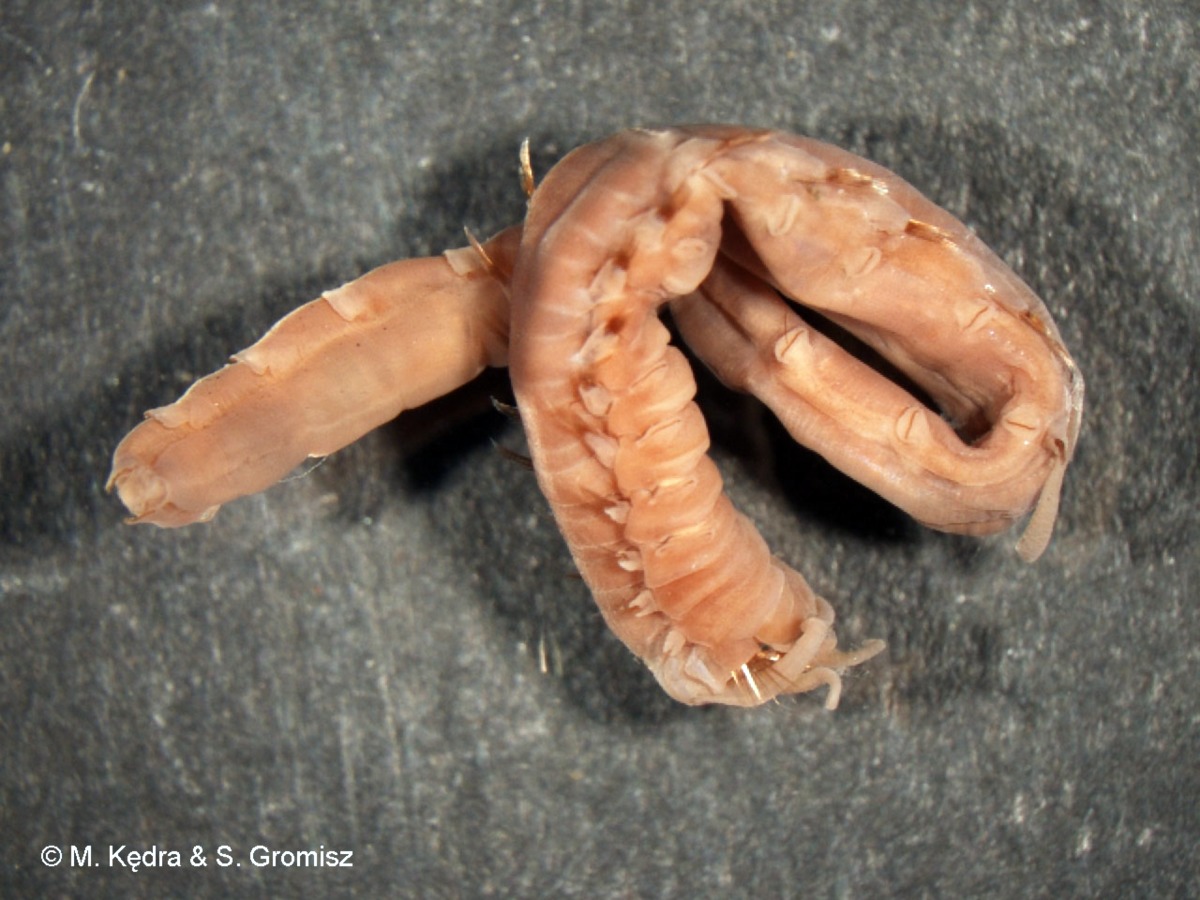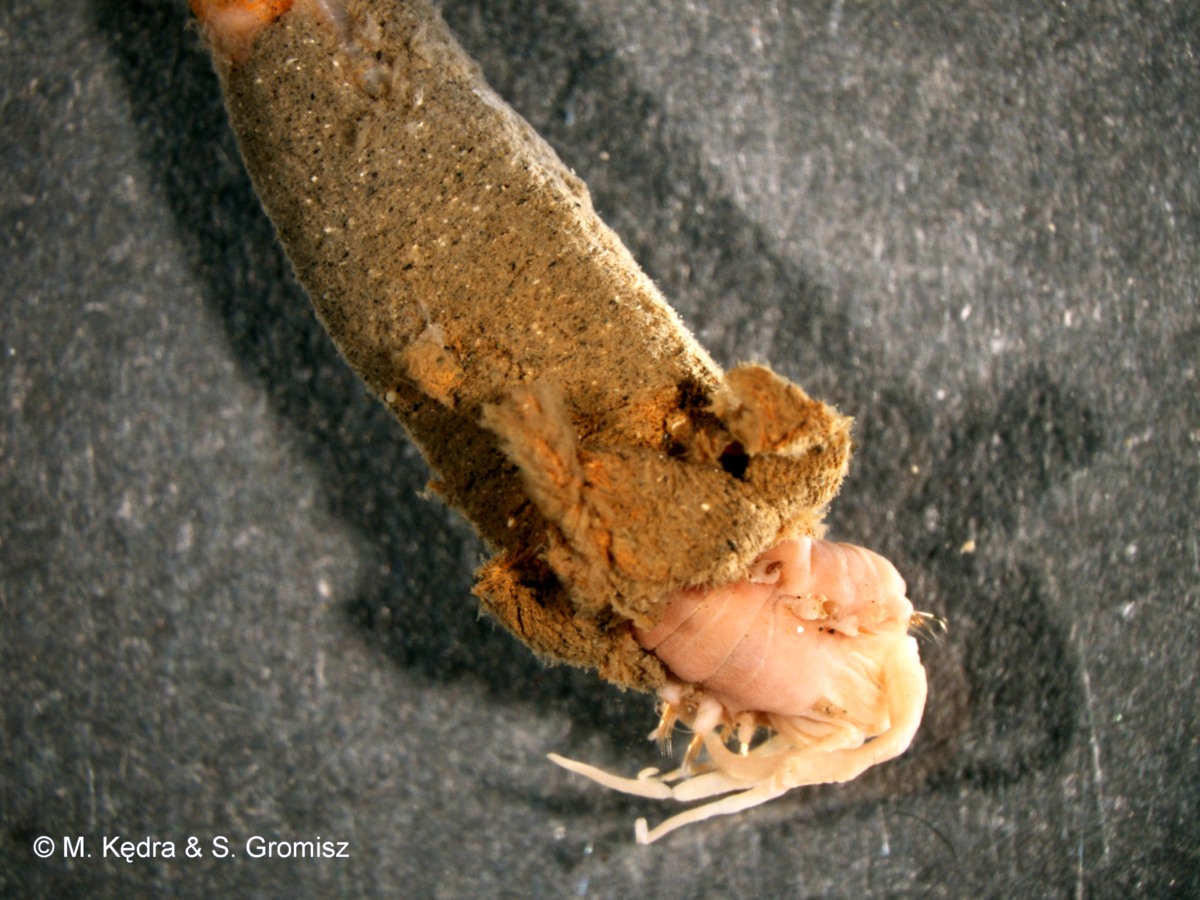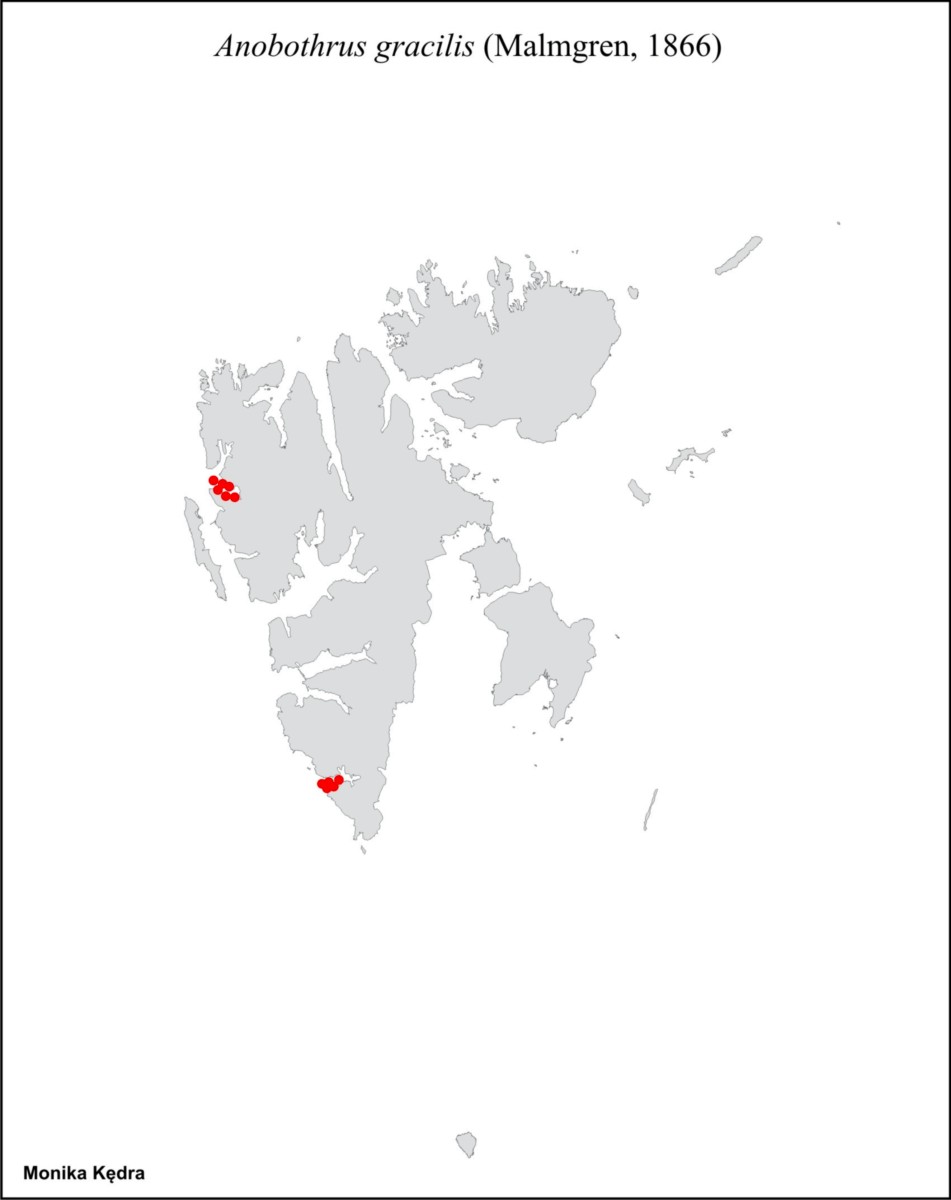Anobothrus gracilis (Malmgren, 1866)

|

|

|
Ampharete gracilis Malmgren, 1866
Sosane gracilis Malmgren, 1866
Sosane sulcata nidrosiensis Bidenkap,1907
Anobothrus gracilis Hessle, 1917
Distinguishing characteristics
15 thoracic segments with notopodia with capillary chaetae (first pair very small).
Long and fine paleae.
11th pair of notopodia elevated and connected by a low dermal ridge.
Species description
Body long and slender; thorax cylindrical, abdomen tapering towards the pygidium. Prostomium with two groups of eyespots. Branchiae in two nearly contiguous groups. Three branchiae of each group in a transverse row, the fourth one behind the innermost one of the three. Paleae long and fine, 12-14 on each side. 15 thoracic segments with notopodia with capillary chaetae. First pair of notopodia very small and often overlooked, 11th pair elevated, but not transformed, and connected by a low dermal ridge bearing a transverse band of cilia. 12 thoracic and 13 abdominal uncinigerous segments. Pygidium without cirri. Tube – a thin layer of secretion incrusted with silt and clay and posteriorly with small, flattened stones and shell fragments.
Size
Up to 47 mm long.
Color
Alive yellow to yellowish pink with a faint blue iridescence, the band of cilia highly iridescent.
In alcohol yellowish, often glossy.
Habitat
Mainly on silt and mixed bottoms, rarely on pure sand. From the upper sublittoral to about 3400 m.
Mobility
Sedentary.
Feeding
Surface deposit feeder.
Life cycle
Likely nonpelagic larvae.
Distribution
Arctic-Atlantic-Pacific shelfs, Eastern North Atlantic, Canadian Atlantic, West Greenland, Siberian Arctic, North American Pacific, Yellow Sea. Iceland, Jan Mayen, Barents Sea, entire Norwegian coast, North Sea, Skagerrak, Kattegat, Swedish west coast, Öresund.

